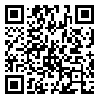Tue, Dec 2, 2025
Volume 34, Issue 2 (2-2024)
JHNM 2024, 34(2): 189-199 |
Back to browse issues page
Download citation:
BibTeX | RIS | EndNote | Medlars | ProCite | Reference Manager | RefWorks
Send citation to:



BibTeX | RIS | EndNote | Medlars | ProCite | Reference Manager | RefWorks
Send citation to:
Rokni Shirazi F, Moghadamnia M T, Javadi-Pashaki N, Kazemnezhad Leili E, Ghasemzade M. Effect of Adding Continuous Positive Airway Pressure via Mask on Respiratory Indices During Cardiac Rehabilitation After Coronary Artery Bypass Grafting. JHNM 2024; 34 (2) :189-199
URL: http://hnmj.gums.ac.ir/article-1-2301-en.html
URL: http://hnmj.gums.ac.ir/article-1-2301-en.html
Fatemeh Rokni Shirazi1 

 , Mohammad Taghi Moghadamnia *2
, Mohammad Taghi Moghadamnia *2 

 , Nazila Javadi-Pashaki3
, Nazila Javadi-Pashaki3 

 , Ehsan Kazemnezhad Leili4
, Ehsan Kazemnezhad Leili4 

 , Mehrzad Ghasemzade5
, Mehrzad Ghasemzade5 



 , Mohammad Taghi Moghadamnia *2
, Mohammad Taghi Moghadamnia *2 

 , Nazila Javadi-Pashaki3
, Nazila Javadi-Pashaki3 

 , Ehsan Kazemnezhad Leili4
, Ehsan Kazemnezhad Leili4 

 , Mehrzad Ghasemzade5
, Mehrzad Ghasemzade5 

1- Nursing (MsN), Department of Medical-Surgical Nursing, School of Nursing and Midwifery, Guilan University of Medical Sciences, Rasht, Iran.
2- Associate Professor, Department of Medical-Surgical Nursing, School of Nursing and Midwifery, Guilan University of Medical Sciences, Rasht, Iran. ,moghadamnia@gums.ac.ir
3- Associate Professor, Social Determinants of Health Research Center (SDHRC), Guilan University of Medical Sciences, Rasht, Iran.
4- Associate Professor, Department of Biostatistics, School of Nursing and Midwifery, Guilan University of Medical Sciences, Rasht, Iran.
5- Anesthesiologist, Ghaem International Hospital, Rasht, Iran.
2- Associate Professor, Department of Medical-Surgical Nursing, School of Nursing and Midwifery, Guilan University of Medical Sciences, Rasht, Iran. ,
3- Associate Professor, Social Determinants of Health Research Center (SDHRC), Guilan University of Medical Sciences, Rasht, Iran.
4- Associate Professor, Department of Biostatistics, School of Nursing and Midwifery, Guilan University of Medical Sciences, Rasht, Iran.
5- Anesthesiologist, Ghaem International Hospital, Rasht, Iran.
Abstract: (1029 Views)
Introduction: Coronary artery bypass graft (CABG) is the primary surgical process to reduce mortality in patients with coronary artery disease. Atelectasis, as the most important pulmonary complication, postpones the recovery period. One of the most innovative methods for preventing atelectasis is continuous positive airway pressure (CPAP).
Objective: The present study evaluated the effect of adding CPAP to the cardiac rehabilitation program after CABG on exercise and respiratory parameters.
Materials and Methods: This research was a randomized clinical trial conducted on 40 patients of two intervention groups (20 patients) and control (20 patients) after CABG. They were randomly assigned with four block randomizations to receive CPAP mask besides incentive spirometry (IS) in the intervention group or only IS in the control group. Data collection tools were demographic information, modified Borg scale 10, exercise, and respiratory parameters. Participants were assessed from the first to the fourth days of the study. The repeated measures analysis of covariance, t-test, Mann-Whitney test, and multivariate analysis of covariance were used for data analysis.
Results: There were 17 men and 3 women in the intervention group and 12 men and 8 women in the control group. Their Mean±SD age was 59.80±9.54 years in the intervention and 54.45±11.32 years in the control group. From the first to the third day, the values of dyspnea (P=0.001), leg effort (P=0.001(, walking time (P=0.001), and peripheral oxygen saturation before and after walking (P=0.001) were statistically significant in both groups. Considering the group effect, dyspnea (P=0.002), leg effort (P=0.001), walking time (P=0.001), and peripheral oxygen saturation before and after walking (P=0.001) were significant between the two groups. Considering the group and time effect, the tidal volume (P=0.001), minute ventilation (P=0.006), forced vital capacity (P=0.001), forced expiratory volume in one second (P=0.001), and peak expiratory flow (P=0.001) were significant.
Conclusion: Adding a ventilation assist gadget featuring CPAP to cardiac rehabilitation programs may improve the exercise and respiratory parameters after CABG.
Objective: The present study evaluated the effect of adding CPAP to the cardiac rehabilitation program after CABG on exercise and respiratory parameters.
Materials and Methods: This research was a randomized clinical trial conducted on 40 patients of two intervention groups (20 patients) and control (20 patients) after CABG. They were randomly assigned with four block randomizations to receive CPAP mask besides incentive spirometry (IS) in the intervention group or only IS in the control group. Data collection tools were demographic information, modified Borg scale 10, exercise, and respiratory parameters. Participants were assessed from the first to the fourth days of the study. The repeated measures analysis of covariance, t-test, Mann-Whitney test, and multivariate analysis of covariance were used for data analysis.
Results: There were 17 men and 3 women in the intervention group and 12 men and 8 women in the control group. Their Mean±SD age was 59.80±9.54 years in the intervention and 54.45±11.32 years in the control group. From the first to the third day, the values of dyspnea (P=0.001), leg effort (P=0.001(, walking time (P=0.001), and peripheral oxygen saturation before and after walking (P=0.001) were statistically significant in both groups. Considering the group effect, dyspnea (P=0.002), leg effort (P=0.001), walking time (P=0.001), and peripheral oxygen saturation before and after walking (P=0.001) were significant between the two groups. Considering the group and time effect, the tidal volume (P=0.001), minute ventilation (P=0.006), forced vital capacity (P=0.001), forced expiratory volume in one second (P=0.001), and peak expiratory flow (P=0.001) were significant.
Conclusion: Adding a ventilation assist gadget featuring CPAP to cardiac rehabilitation programs may improve the exercise and respiratory parameters after CABG.
Keywords: Coronary artery bypasses graft (CABG), Atelectasis, Incentive spirometry, Continuous positive airway pressure
Article Type : Research |
Subject:
General
Received: 2024/02/24 | Accepted: 2024/02/21 | Published: 2024/02/21
Received: 2024/02/24 | Accepted: 2024/02/21 | Published: 2024/02/21
Send email to the article author
| Rights and permissions | |
 | This work is licensed under a Creative Commons Attribution-NonCommercial 4.0 International License. |



